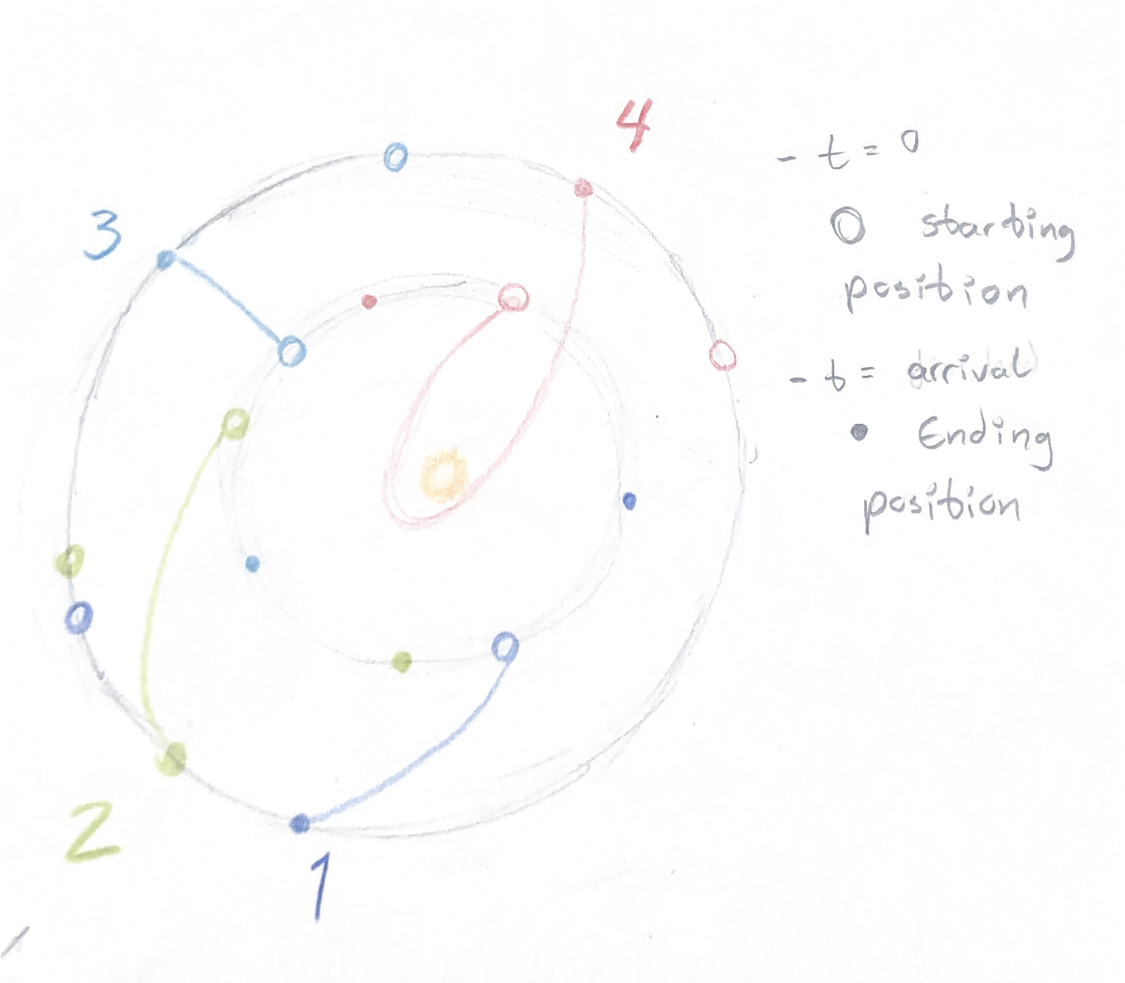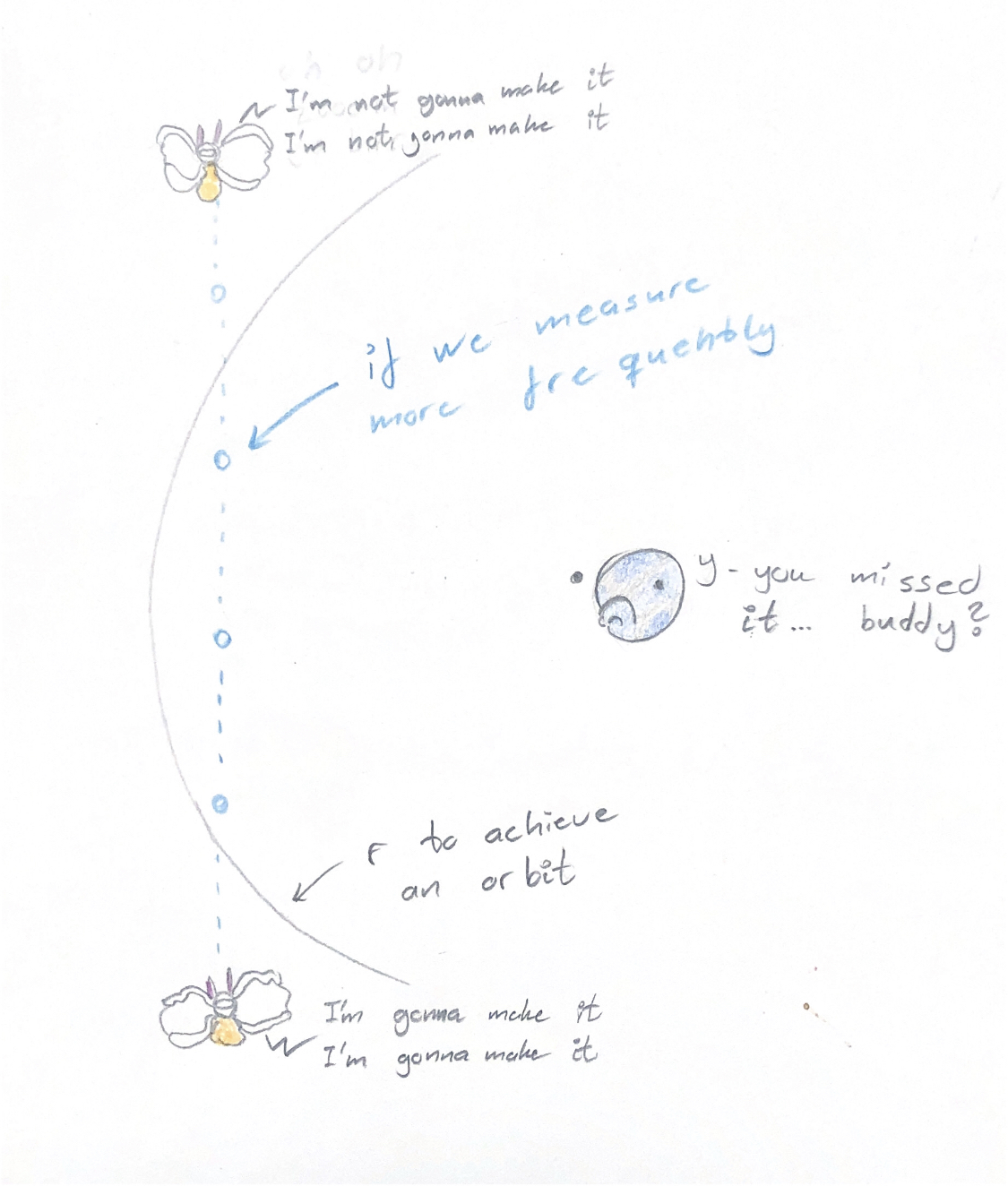Now that we've successfully launched our rocket we need to talk a bit about how we're even going to get to our destination. Cause as straight forward as it can seem, a lot of planning goes into it. I won't bore you with the details too much but we essentially have four main ways of getting from point a to b here;

1 - Meeting the destination planet from farther ahead in its orbit
2 - Catching up to the planet from behind
3 - Launching straight away from the sun, and hitting the bullseye on the planet
4 - Launching close to the sun in order to slingshot ourselves back out
There are probably a dozen other ways you can think of too, but we don't want to be here all day, so what method is the most ideal one? Short answer; usually catching up, long answer; it really depends on your destination, fuel, etc. etc.
First to eliminate two birds with one stone; we don't want a very high velocity compared to the planet we're going to, this is because an orbital injection maneuver will be rendered near impossible at high enough speeds. If you recall, the way we determine the velocity we need for the injection maneuver (to start orbiting the planet) is given as \(v=\sqrt{\frac{MG}{r}}\), in practice this means if v is high enough we won't be effected enough by the gravity of the planet to achieve an orbit, as the greater v is the closer we need to be to the planet (big v leads to small r). In our case this pretty much eliminates options 1 and 4. In option 1, the spacecraft will have its own speed and additionally the speed the planet, relative to the destination planet, meaning we need to slow down our spacecraft a lot before we're able to achieve a speed we'll be able to enter orbit at. Option 4 will give us a bunch of speed from the slingshot maneuver, and you can probably tell where this will go... Note, however, that these two methods are pretty useful if you want to travel to a far out planet while expending as little fuel as possible, you could even use option 1 in a similar fashion to 4, in roder to gain speed ourwards. This is the way spacecraft like Voyager 1 and 2 were launched out of our solar system.
Option 3 might seem tempting, but it requires incredible timing and precision compared to option 2. There will be a tiny timeframe, and trajectory, where we can simply launch our rocket and reach our destination without boosts. This brief window of time will be about the same in both options. The reason option 2 is more favorable is our relative speed to the planet. In example 1 our spacecraft will only need to worry about it's own velocity, as the planet velocity is tangential upon it. As opposed to example 1; in example 2 the speed of the planet will be subtracted from our spaceship, meaning the radius at which we can achieve an orbit is greater than in all the aformentioned examples.
We have our planned route now, what next? Well to explain the next step I think it can be useful to regard the problem similarly to orienteering. Cause our next goal is to reach this critical distance from the planet, we'll need to get close enough to get caught by it, regard this as being close enough to an orienteering post to spot it.

However, we enouncter a slight issue here; since we don't want to fry our computational devices in our simulations we need to have pretty big timesteps, meaning we only occasionally look at the position of the spacecraft, for the majority of the journey. The reason for this is cause almost nothing happens here meaning it's not very interesting to depict it, so what happens when we get close to the planet? Well if we don't reduce the distance between each measurement we can easily end up missing the period of time we're within the radius we'd normally achieve an orbit at. The simple fix to this is just measuring more often when we approach this distance, or more ideally, a bit before we actually reach the relevant radius. This means we're less likely to mistakenly simulate our spacecraft overshooting our destination. 
With that, our prep is concluded, and we may finally launch our rocket. The ride may have a few more G's than expected, and I'm not talking about the hip kind, but I'm sure you lads will be fine. Just make sure to record the takeof ey? Next time we'll see how you all do in practice, don't let us down!
